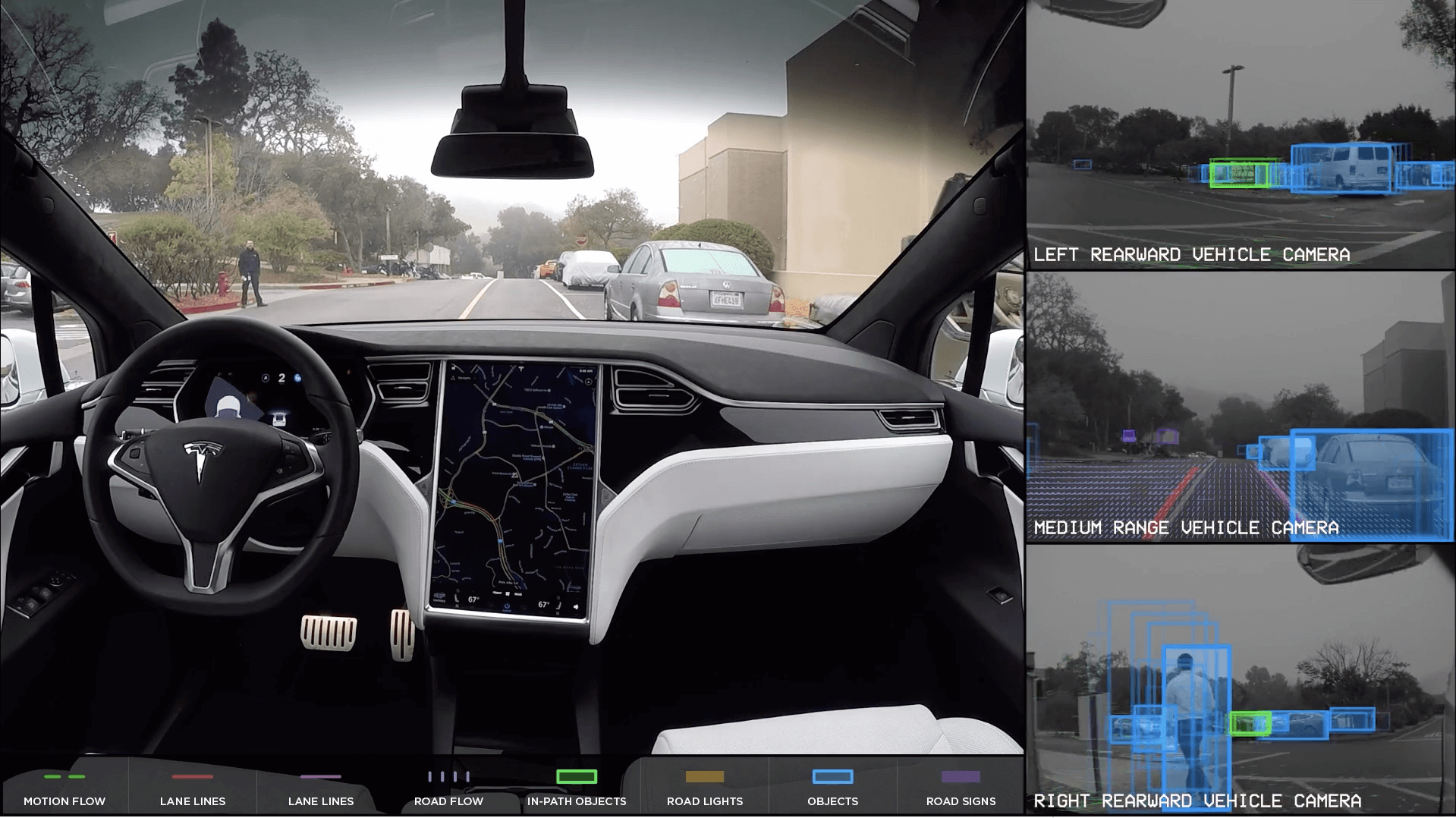We founded Verkada on the basis of a big bet and a discovery.
First, the big bet: artificial intelligence is about to change the world.
After decades of research and billions of dollars invested, artificial intelligence has finally become a viable technology that can effectively tackle many real-world problems. This is readily apparent through applications like Facebook or Google Photos that make sense of the millions of images we capture every day — and perhaps most obvious when we witness cars autonomously navigating complex human infrastructure. Check out this video of Tesla’s autopilot, as just one example:

These recent advances are known so broadly that not a week goes by without a mainstream press headline with “A.I.” in it. The part that’s less well understood is just how portable A.I. & computer vision are, and how quickly and effectively they can be applied to other industries. Applications that make sense of the real world will soon be as pervasive as mobile apps are today, and it is precisely this realization that drove some of our early excitement for building a modern video security system.
Benjamin, James and I had this trend front of mind while exploring a wide range of ideas in the months leading up to Verkada’s inception. At the time, the three of us were working to find the next meaningful idea to pursue, having sold our previous company in 2010. We spent the time working on several projects, ranging from consumer IoT devices to domestic LTL-shipping. We hacked together prototypes and researched deeply, but nothing really stood out to us as being the Next Big Thing.
Until one afternoon, when a simple iOS photos app project led us to our “Aha!” moment. Using readily available machine learning infrastructure, we were able to apply a number of modern approaches to processing images. The results shocked us: the images and insights we produced were astoundingly ahead of what we remembered from classes at Stanford back in 2007.
It was suddenly clear to us — computers can see the real world, and A.I. can make sense of it. The next open question became where to focus our energy to make the most meaningful impact.
The Discovery: an Industry in Need of Innovation
After some search, we trained our sights on enterprise video security — a large, established market ($16.5 billion in 2016) where A.I. and computer vision could clearly add a lot of value. Imagine getting an SMS alert when an unauthorized person is detected at a place of work. Imagine being able to measure wait times and staff productivity. Imagine a camera that learns about the objects it sees. The use cases are infinite and, thanks to the previously noted recent advances, delivering on them isn’t that far off.
What we discovered: in contrast to its future potential, most of the existing commercial video surveillance technology today hasn’t changed much since the 1980s. Many of the solutions we encountered were hard to access, hardware-centric, and relied on architecture closer to VHS tapes than that of modern connected devices.
Our excitement grew further as we spoke with industry experts, visited trade shows (ASIS & ISC West), and realized most of the industry wasn’t focused on approaches that would enable the kind of transformational software development common in other industries.
Information security quickly surfaced as the next critical piece of the puzzle. Ironically, we found that cameras & video recorders — installed to provide physical security — are frequently compromised and used to mount attacks on IP networks. Security video footage is commonly unencrypted (both in storage & transmission); devices are unpatched; and it’s not unusual to find default passwords (eg. username: admin, password: admin). In short, the information security of surveillance systems often relies on the physical security of the wiring, rather than modern encryption techniques. The very infrastructure designed to protect us is itself extremely vulnerable.
All of the shortcomings of existing solutions presented an amazing opportunity for Verkada — we saw a clear path to leapfrog innovation. Instead of relying on outdated technology from the 1990s, or upgrading only bits and pieces of the technology stack, we decided it’s time to build a solid, modern video security solution from the ground up.
Armed with this discovery, we forged a dual mission. First, we endeavored to build a modern video security system using the latest and most secure technology standards. By building a better product, we’d also create the new technology stack needed to enable rapid innovation in A.I. This was the second part of the mission: unlock the potential of computer vision to help organizations everywhere strengthen the safety and productivity of their operations.
How are we doing so far? In my next post, I’ll share some of our customers’ recent feedback and outline more on our vision for applications of A.I. and computer vision.
